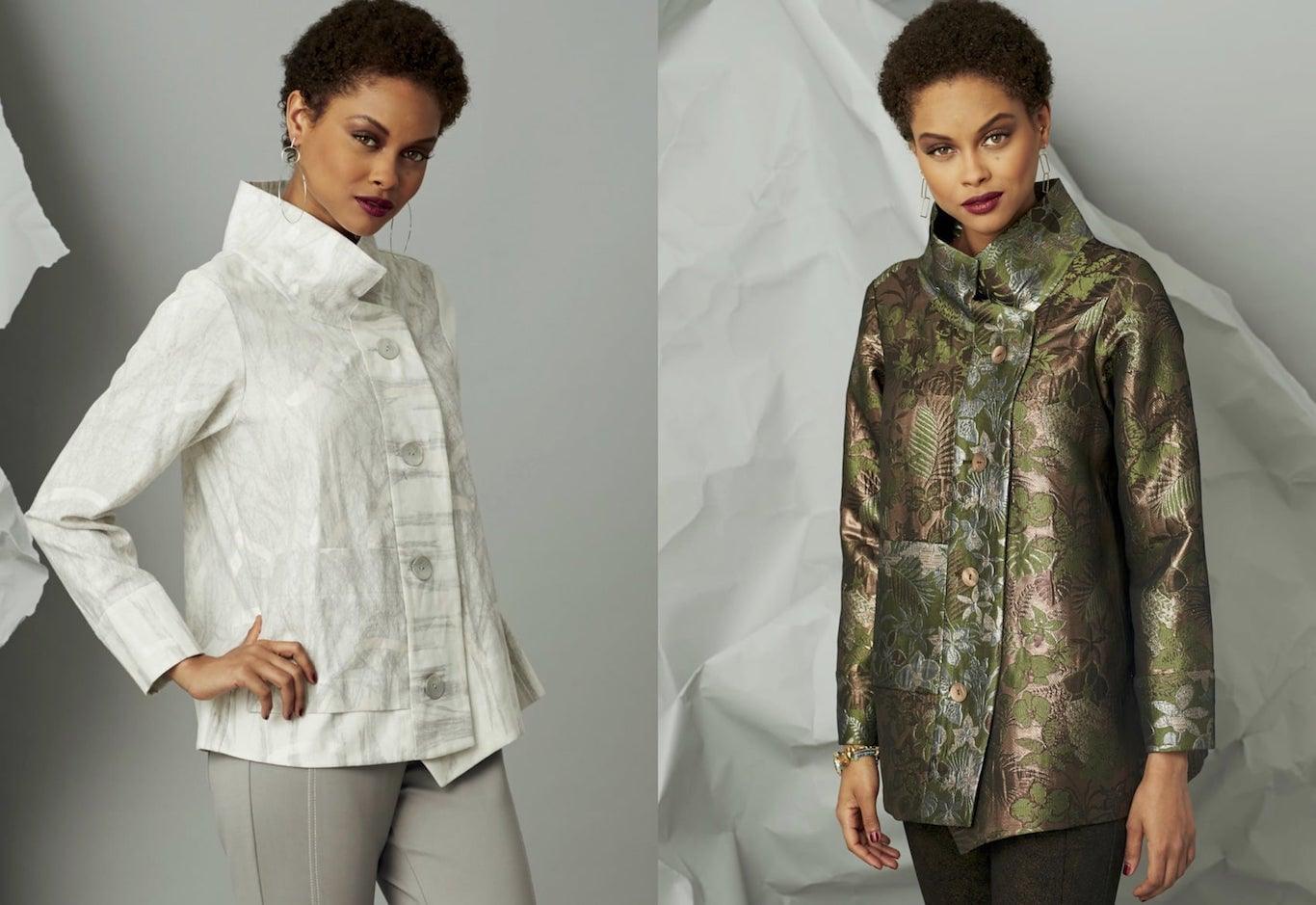The style bridges not only seasons, but, in the words of Gwen Spencer, 'it can go from the garden to the opera'. I've interpreted this versatile style in a dressed up brocade and a more relaxed linen/cotton light canvas from our Japanese collection for the pattern envelope. When testing the design I made it in cotton flannel, linen and sweatshirt fabric as a vest. As I write tracking the trends here in Paris, I can see it kicked back in denim or army green cotton as an updated version of the jean or barn jacket. Makes a natural background for color blocking, combinations of different fabrics, embroidery or embellishment or surface design.

Suggested fabrics:
Linen, brocade, taffeta, shirting/quilting cotton, lightweight wool, stable knits like ponte, denim, beefy stable sweatshirt fabrics, stretch woven velvet or corduroy
Cutting and marking:
- Take the time to place the grain on the pattern piece with care, this jacket has subtle shaping.
- Almost all of the pattern pieces are curved, some very slightly, and it is this slight shaping that creates the cut and hang of the jacket.
- Transfer markings with care, matching up the various points makes the sewing so much easier.
Construction Overview:
- First construct the body of the jacket
- Right front with pocket and front band
- Left front
- Back with band
- Sew shoulder and side side seams
- Top collar stitched and trimmed at the neck
- Join the right and left hem facings to back hem facing.
- Attach the under collar to the facings
- Stitch around the outer edge of the jacket
- Collar right side is constructed like a classic 'notched' collar.
- Finally, the sleeves are constructed and inserted.
- Secure the inside facings to the garment
Hem and facings:
It helps to lay out these pieces as they will be sewn, matching the markings. Gwen Spencer says, 'place the pattern pieces on the fabric and pin the fabric pieces together as they will be sewn'.Work on a flat surface so it is easier to pin the pieces without twisting.
Tuck under the raw edges on the facings so they can be pressed in place once the hem/facings are sewn and turned.





Marcy's Versions
Cotton flannel; In a Paris fabric shop I was told this fabric came from Hermes, so it a cut above most cotton flannels, super cozy.Here is the shorter version, an upscale version of a flannel shirt! As a vest, it ended up being one of my favorite at-home and in-the-studio garments last winter.
- longer length
- sweatshirt fabric
- raw edges
- memory wire in the collar - I camouflaged the white tip of the memory wire with a black sharpie






